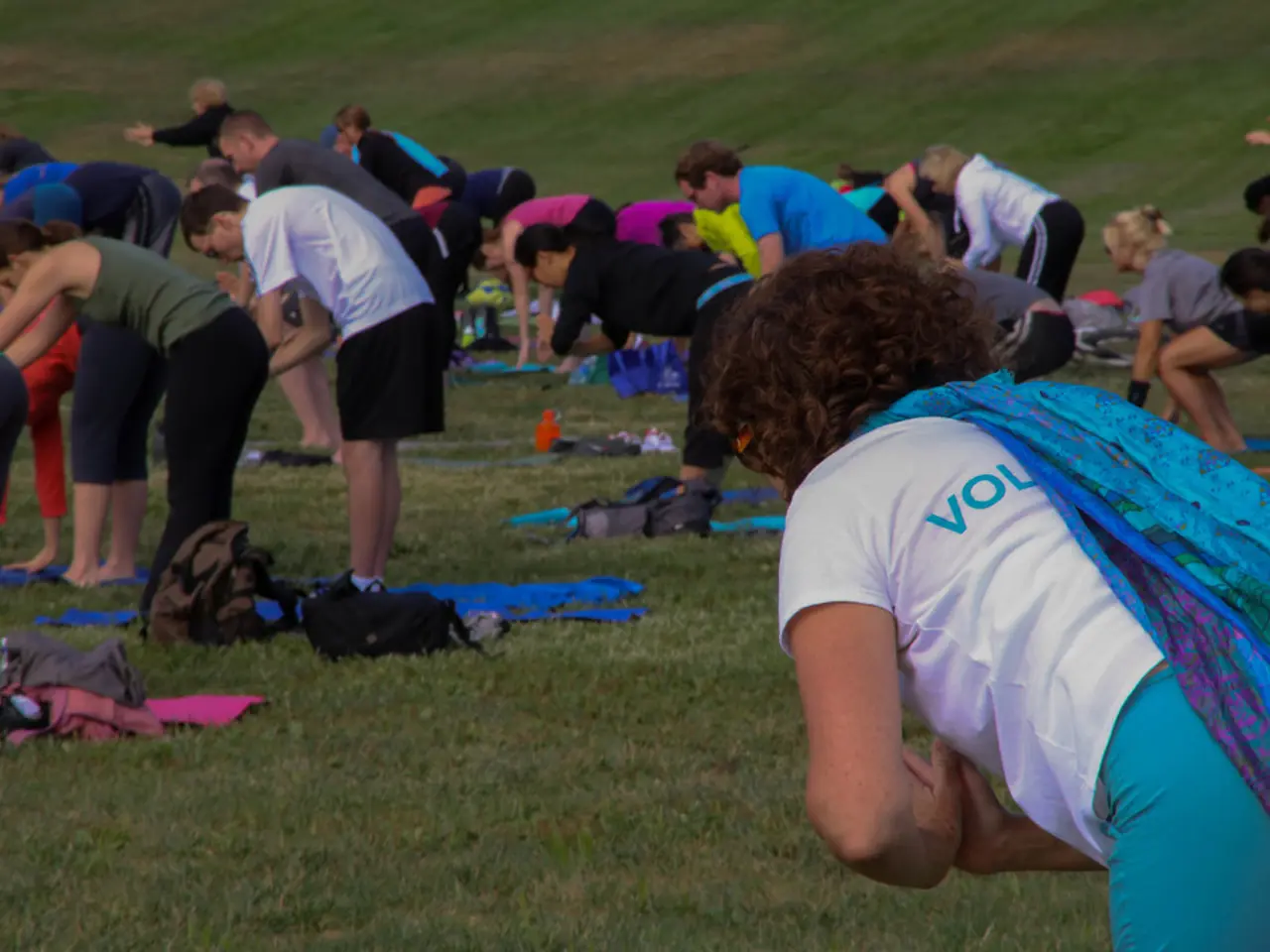Delving into Yoga's Deeper Layers: Discovering the Eight Branches of Yoga Practice
Yoga's Eight-Limbed Path: A Comprehensive Guide to Spiritual Development
Yoga, a spiritual and philosophical system that originated thousands of years ago in ancient India, has been codified by the sage Patanjali in the Yoga Sutras. One of the most significant contributions of Patanjali is the outline of the eight limbs of yoga, or Ashtanga Yoga, which serves as a practical framework for living a meaningful and ethical life.
The eight limbs of yoga are a comprehensive path for spiritual development that encompasses both external and internal practices. They are:
- Yama – Ethical restraints or social disciplines, including non-harming (Ahimsa), truthfulness (Satya), non-stealing (Asteya), continence (Brahmacharya), and non-possessiveness (Aparigraha).
- Niyama – Personal observances such as cleanliness (Shaucha), contentment (Santosha), austerity (Tapas), self-study (Svadhyaya), and devotion to a higher power (Ishvara Pranidhana).
- Asana – Physical postures aimed at developing steadiness and ease in the body.
- Pranayama – Breath control practices to regulate life force and purify the mind.
- Pratyahara – Withdrawal of the senses from external objects to direct attention inward.
- Dharana – Concentration, or focused attention on a single point or object.
- Dhyana – Meditation, which is sustained, uninterrupted concentration.
- Samadhi – Absorption or blissful union, where the meditator merges with the object of meditation, leading to self-realization.
The first four limbs are primarily external disciplines relating to behaviour, body, and breath and help prepare the practitioner for internal exploration. The last four limbs (Pratyahara, Dharana, Dhyana, Samadhi) focus on the mind and inner awareness, culminating in spiritual absorption.
Dharana is a key step in calming the mind and preparing for meditation. It involves focusing the attention on a single object, such as a mantra or the breath. Dhyana differs from concentration in that the effort dissolves, and a continuous state of awareness emerges. Samadhi is not a fixed destination, but a state of being that can arise through consistent practice and surrender. It is the experience of oneness and profound inner peace.
Pranayama, the conscious regulation of breath, supports energy flow and mental clarity. It can reduce stress and improve overall well-being when practiced regularly. Pratyahara involves turning attention inward by consciously withdrawing from external stimuli, creating space for self-awareness and reflection, skills valuable in our overstimulated digital age.
Modern practitioners often begin yoga with movement, but exploring the eight limbs of yoga can open them to a more complete, grounded experience. A Yoga Teacher Training can offer the structure, guidance, and community to integrate the eight limbs of yoga meaningfully into one's life, shifting the focus from performance to presence and from external goals to internal evolution. The eight limbs of yoga can radically change how one approaches their yoga journey, making it a lifelong, transformative practice.
[1] De Michelis, D. (2002). The Yoga Sutras of Patanjali. Oxford University Press.
[3] Iyengar, B. K. S. (1993). Light on the Yoga Sutras of Patanjali. Alvin A. Redman.
[5] Feuerstein, G. (1989). The Yoga Sutras of Patanjali. Shambhala Publications.
- The Yoga Sutras, penned by Patanjali, outline the eight limbs of yoga, a comprehensive path for spiritual development, which includes the ethical restraints (Yama) such as non-harming, truthfulness, and non-stealing.
- Yoga's Eight-Limbed Path encompasses personal observances (Niyama), like cleanliness, contentment, and self-study, that aim for spiritual growth and a deeper connection with a higher power.
- Integrating education and self-development through yoga teacher training can help modern practitioners delve deeper into the eight limbs of yoga, promoting a shift from external goals to personal growth, mental health, and lifelong learning.
- As a lifelong, transformative practice, the eight limbs of yoga can encourage mindfulness in everyday life, leading to better health-and-wellness, reduced stress, and improved overall well-being.
- Science supports the positive impact of yoga practices, like Pranayama (breath control) and Samadhi (spiritual absorption), on the body, mind, and inner awareness, which contribute to the holistic goal of education and self-development.




